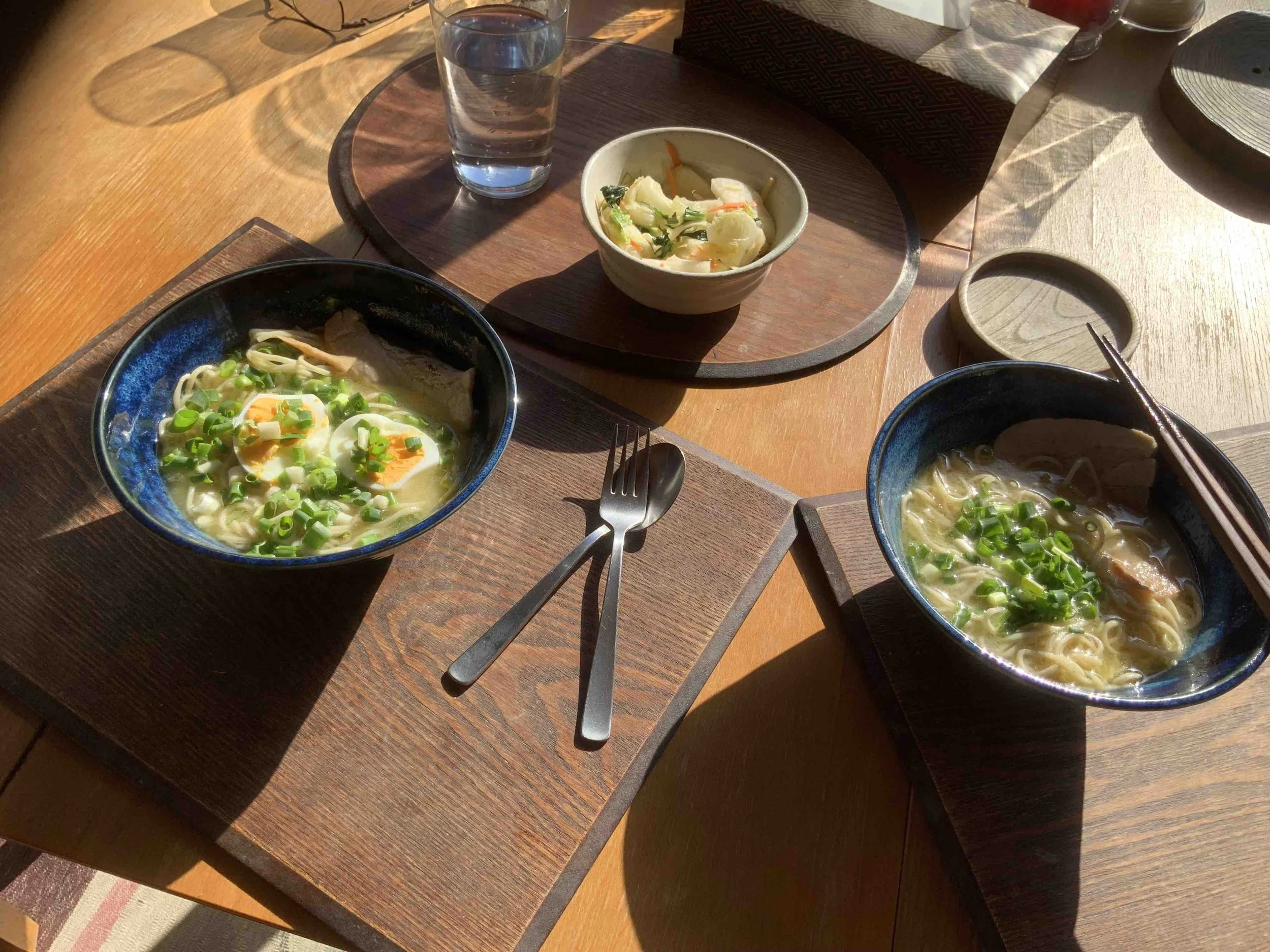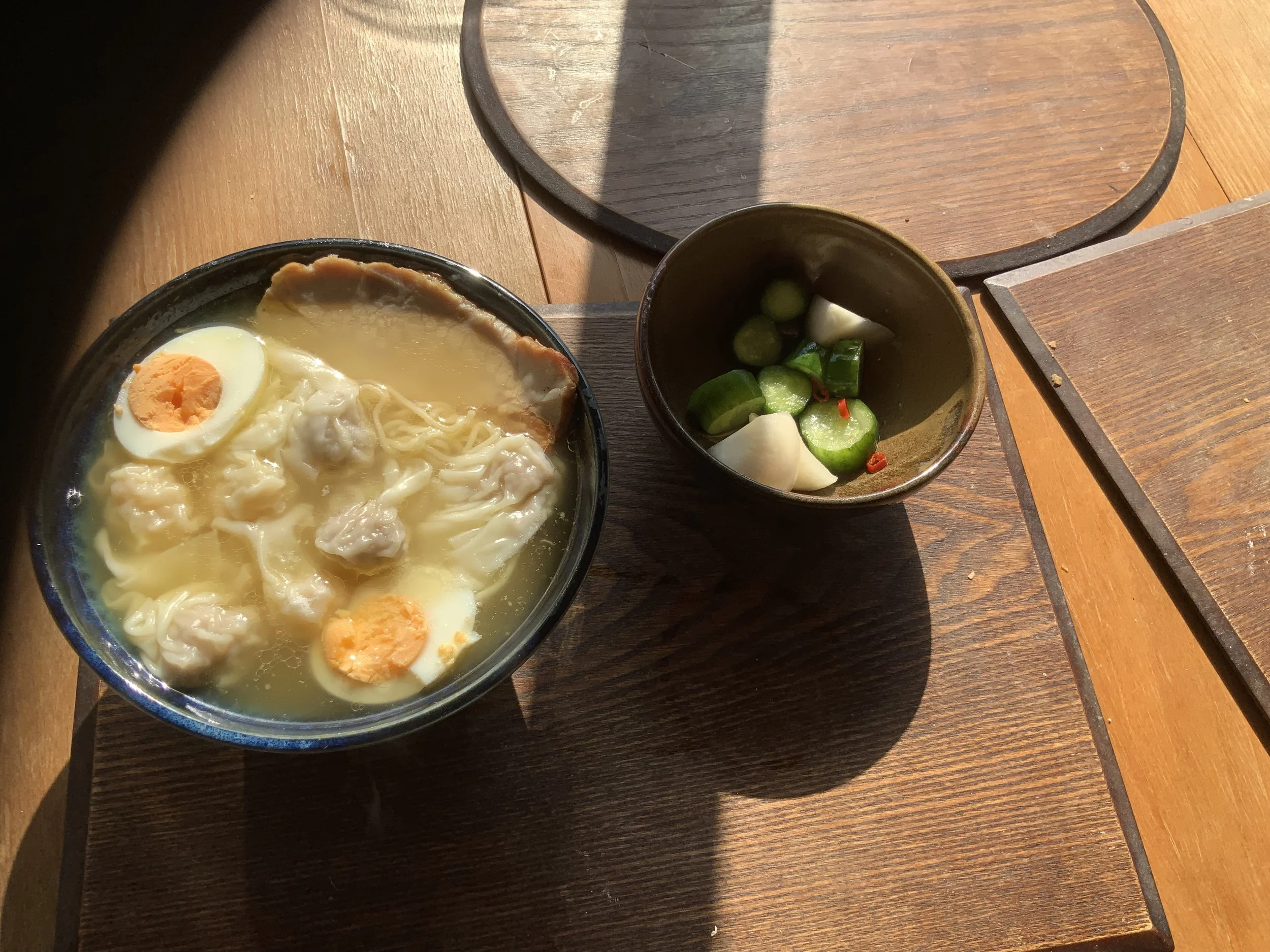Frozen Culture at the Door
I’m addicted to ramen, so the pandemic put me into withdrawal. The holy triumvirate of home food delivery—pizza, soba, and sushi—wasn’t enough for my cravings. And even the recent uptick in home delivery services bringing everything from tonkatsu deep fried pork cutlets to spicy Mexican tacos to the door wasn’t enough either.
Fortunately, though, in Tokyo’s intensive consumer culture, no point of sale is left unfilled. Delivery of frozen ramen—from some of the best ramen masters in Japan—is maybe the only good thing to come out of the pandemic.
New master chef sites offer ramen from the highest ranked shops in Japan sent to the door. When I read about this on my friend Robbie Swinnerton’s brilliant Tokyo Food File food and restaurant review site, I leapt on it immediately. (Thank you, Robbie! In debt forever! http://www.tokyofoodfile.com)
The ramen delivery sites prepare packets of broth, noodles, and fixings, freeze them, and have them to your house in a couple days. The packets arrive frozen. I welcome them, wash them and nestle them into the freezer. The weight of the packets is the first clue this is not the light fare of store-bought instant ramen. It’s the weight of Japan’s food culture is entering your home. Irrashaimase!
On home ramen day, I open the freezer and select a flavor from Fukuoka or Sapporo or some other ramen-crazed part of the country. I drop the bag of soup in boiling water for ten minutes and heat the noodles in three. My wife likes to add green leafy somethings, a boiled egg or nori, and we put out pickled vegetables for balance. But what I’m waiting for is that first sip of broth and the mouthfeel of the noodles between my teeth.
Though in a hurry, I take time to read the instructions. They explain the background, give tips on heating, and make suggestions on additions without divulging the inner art every ramen chef keeps secret. The instructions reveal their worry the noodles will be prepared to specification. I guess some chefs wouldn’t be able to trust an amateur home chef with the temperature, timing, and mixing, but thankfully some do. Their pride in every drop of broth is the traditional Japanese attention to craftmanship.
There’s a laziness and love of convenience on my part, I’ll admit. I don’t have to get on a train to scurry all over the city, don’t have to wait in line, and don’t have to mess with sitting at a narrow counter. At home, I can flop onto my sofa for a post-lunch snooze, something you can’t do in most ramen places.
But convenience is not the point. Just the opposite. Ordered-in frozen ramen recreates the excitement of going to a real shop. It commandeers the kitchen. Pots, bowls, strainers, and long cooking chopsticks must be lined up and readied. As I run through the steps, the house fills with a deliciously sour soupy aroma.
And then, the meal begins. And then, the bowl takes over. I bow like a penitent, intone Itadakimasu, and partake.
And yet, as great as this all is, and as necessary during the pandemic, ordering this frozen DIY project makes me wonder if I’m missing something, even while I’m getting something.
Over the years of ramen excursions, I like going to new parts of the city, checking out the people in line, elbowing into a counter, and soaking in the powerful aromas of broth simmering since dawn. I miss the condiments that line the table, the TV turned to some stupid station, and even scooting aside to let someone come in or go out in the cramped space.
I especially miss the ballet of ramen creation. It’s no fun watching yourself make ramen in your own kitchen, but it’s always a magical performance to watch even the most over-worked ramen chef behind any counter. It’s the difference between having a Buddha statue on your bookshelf and kneeling in front of a massive gold Buddha in a thousand-year-old temple. The chefs perform the rituals of the rites of ramen with a practiced ease I can only aspire to.
The freshness, saltiness, balance of oils and broths, and mouthfeel are all the same, it seems to me. But maybe it’s not just the taste that matters. Ramen doesn’t engage only one sense; it engages all five. Or six, if you believe that kind of thing. (With ramen, I do). Convenient as it is, home ramen diminishes the ramen experience.
Home frozen ramen delivery does conquer distance. Chefs and ramen aficionados all over Japan take special pride in local flavors and variations, so I’m delighted to taste ramen from places I’m not likely to go in some time. Still, I’d rather go in person. I want the story that goes with the in-person experience. Ramen always turns into a story.
But if you can have it home, what’s the experience? Is it only the taste? What happens to the ambiance of the place? The excitement of waiting in line? The boxes of ingredients in the corner? If ramen is just the packet and the noodles, and can be made by oneself, does that move it into the mass consumer system that the best ramen places, by their very existence, refute?
There is something about great art, craft and culture that resists packaging, shipping, and reproduction. Ramen’s not just a story—it’s a philosophy of resistance to the factory made “food” production system. Ramen is rooted in culture and thrives on sensory experience. Can that be imported whole?
The question itself is maybe absurd. You might as well consider how you could order butoh dancers or arrange a mikoshi parade through your living room. And yet, frozen ramen is an outstanding lunch.
I miss a vibrant chef, a harried sous-chef, the ramen-lovers in a row. No one says much in ramen places, but their body language does. Salarymen, single women, workers, and students unwind when their bowls arrive on the counter in front of them. Their shoulders loosen as they snap open chopsticks and pick up a spoon. The chef observes his audience, reading reactions like a musician on stage. It’s a shop-wide, silent conversation which no home ramen can match.
Maybe that’s what art and culture do in public. They provide not just the comfort, but a reminder that you need culture, because other people need it. That’s a large part of what I’ve missed during the pandemic—the quietly shared experience of cultural delight, the feeling that what I love is also loved by others. Japan’s a culture of public culture, shared, enjoyed together, observed.
As the pandemic eases, I’ll still keep ordering frozen ramen to make at home, but I’m looking forward to bellying up to the counter in a few places, some I haven’t been to in a couple years, and all the others yet to come.
April 2, 2022



